

William Stopford
4 Days Ago
The T-Cross is Volkswagen's smallest and most affordable SUV. This Polo-on-stilts stacks up well against the Hyundai Venue and Mazda CX-3.
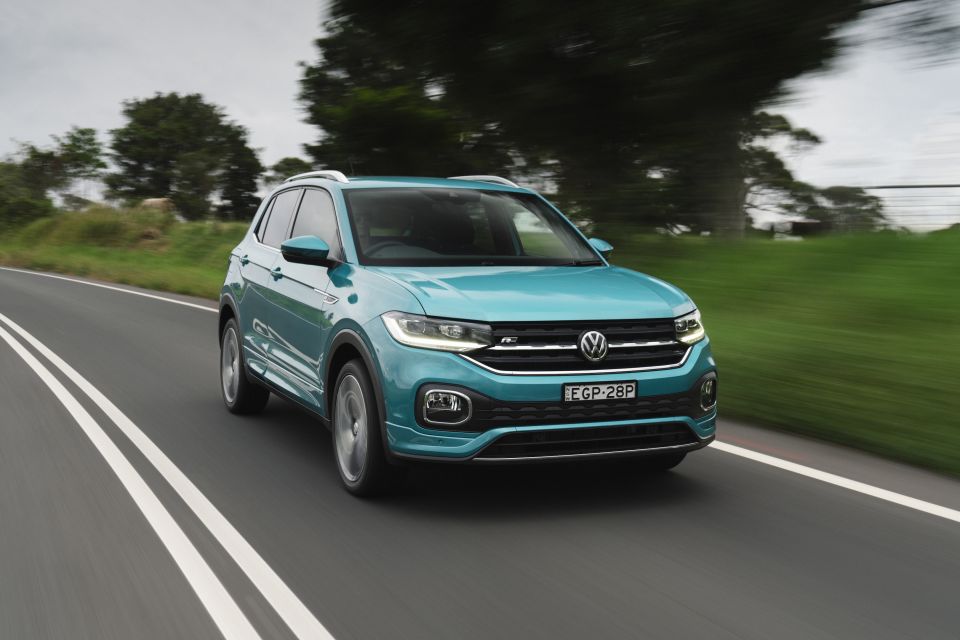
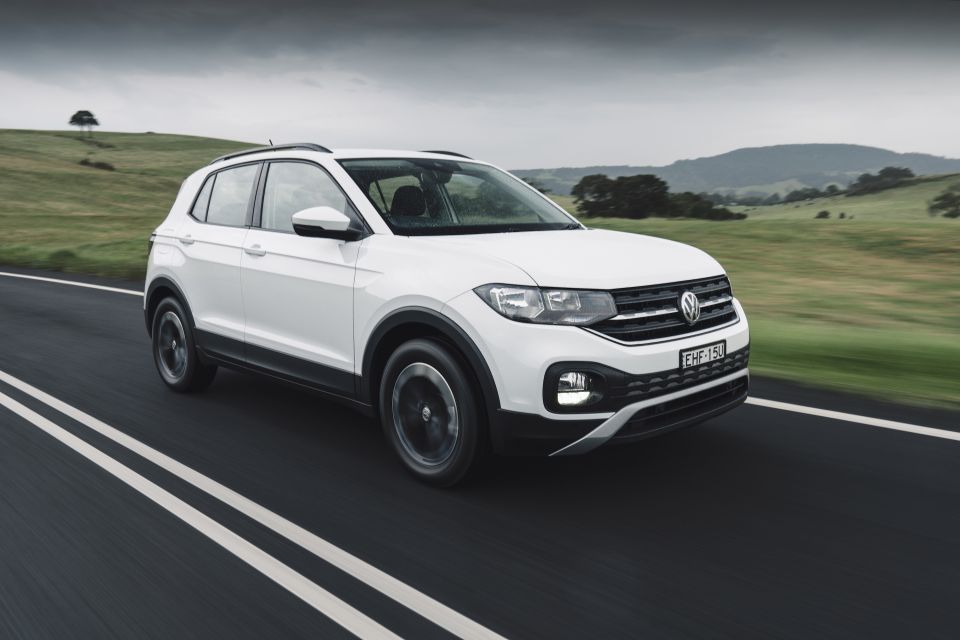

Senior Contributor
New from
$27,990
excl. on-roads

Senior Contributor
New from
$27,990
excl. on-roads


Senior Contributor
New from
$27,990
excl. on-roads

Senior Contributor
New from
$27,990
excl. on-roads
Quickly see how this car stacks up against its competition. Select any benchmark to see more details.
Take advantage of Australia's BIGGEST new car website to find a great deal on a Volkswagen T-Cross.
Volkswagen Australia has just launched its smallest and cheapest SUV to date, though that acronym is beginning to lose all meaning.
At its core, the T-Cross is a Polo city car on stilts and shares many core components. A compact and urban-ready hatch that’s 55mm longer than its aforementioned sibling but with a taller seating position and more clearance, plus a chunky design thanks in part to 137mm of extra body height.
Alongside the bigger T-Roc, it gives the German brand its most substantial SUV family yet. And given these vehicles now make up about half of all sales, that’s a good position for it.
The T-Cross will be the first Volkswagen product for many people, which makes it all the more significant. It might also appeal to older people who wish to downsize now they no longer need to cart about the kids.
What do we think?
There are two specification grades to choose from. The T-Cross Life costs $27,990 before on-road costs, and the Style $30,990 before on-roads.
For context, a range-topping (save GTI) Polo Style costs $25,390 before on-roads.
Other pint-sized SUV competitors include the Hyundai Venue (topping out at $25,740) and Kona ($24,300 to $40,200), Mazda CX-3 ($24,710 to $38,450), and Suzuki Vitara ($24,990 to $34,490).
For those after something more niche, there’s the Citroen C3 Aircross ($32,990).
On the one hand, you pay a premium for the SUV ‘cred’ over a regular hatch, but on the other the T-Cross is no outlier. As with all Volkswagens it’s pitched between cheap and cheerful brands and the luxury set.
One other prospective competitor to keep on eye on is the new-generation Nissan Juke launching in a few months time.


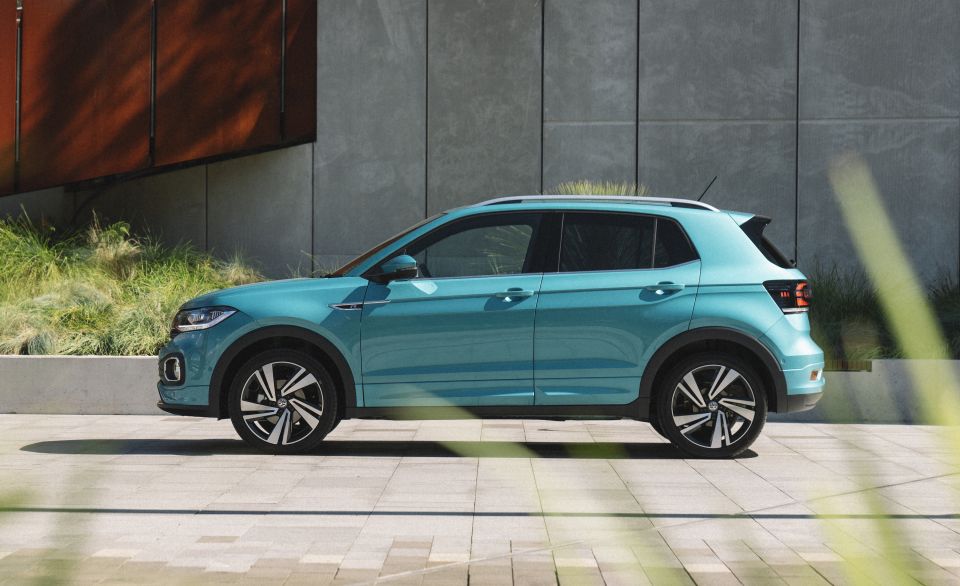
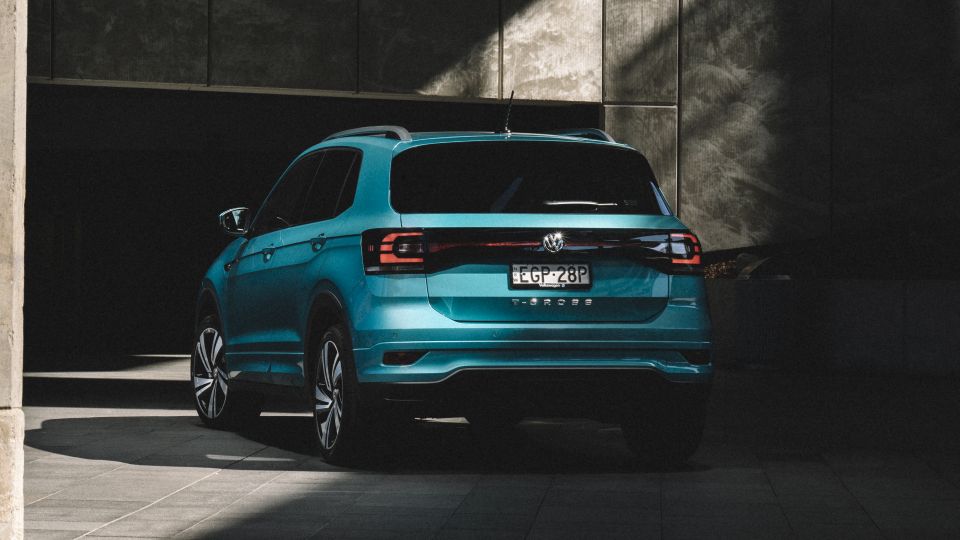
The Life gets 16-inch alloy wheels; cruise control; halogen headlights; LED daytime running lights and taillights; rain-sensing wipers; roof rails; tyre-pressure monitor; parking sensors; a reversing camera; an 8.0-inch touchscreen, Apple CarPlay and Android Auto; a wireless phone charging pad; four USB ports; steering wheel buttons; cloth seats; and manual air-conditioning.
For $3000 more, the Style adds 17-inch alloy wheels; LED headlights with automatic high-beam activation and deactivation functions; dual-zone climate control; shifter paddles; a proximity key fob with starter button; semi-automated parking assist; “comfort sport” seats; chrome roof rails; carpet mats; ambient cabin lighting; electric auto-folding side mirrors with auto-dipping; and adaptive cruise control with stop and go.
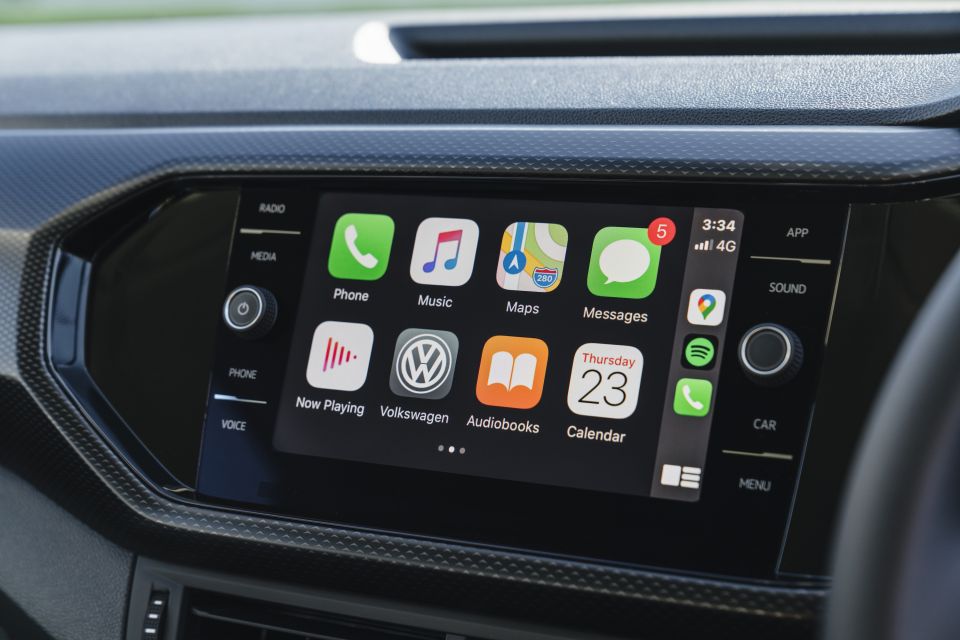
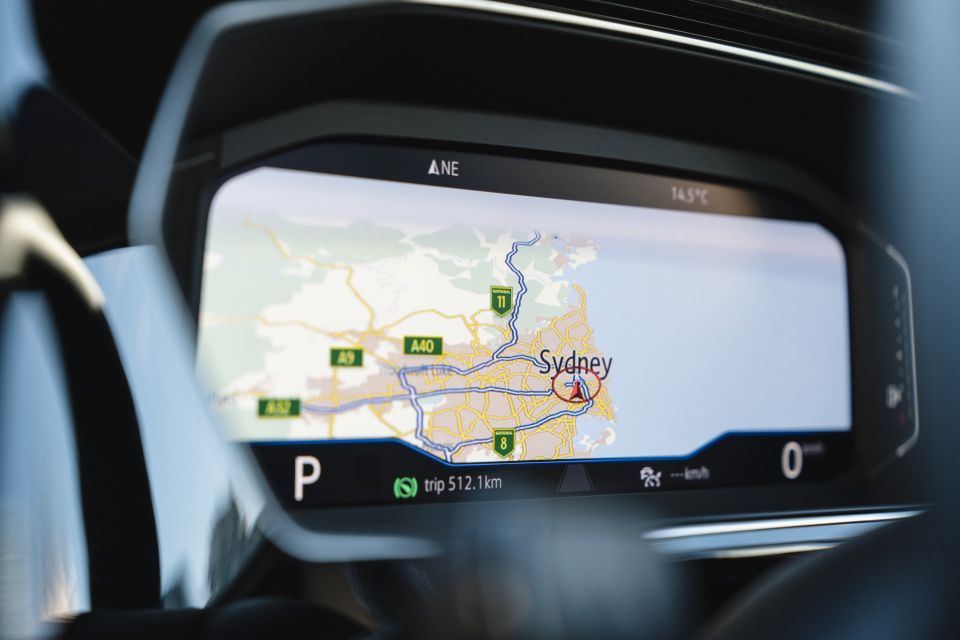
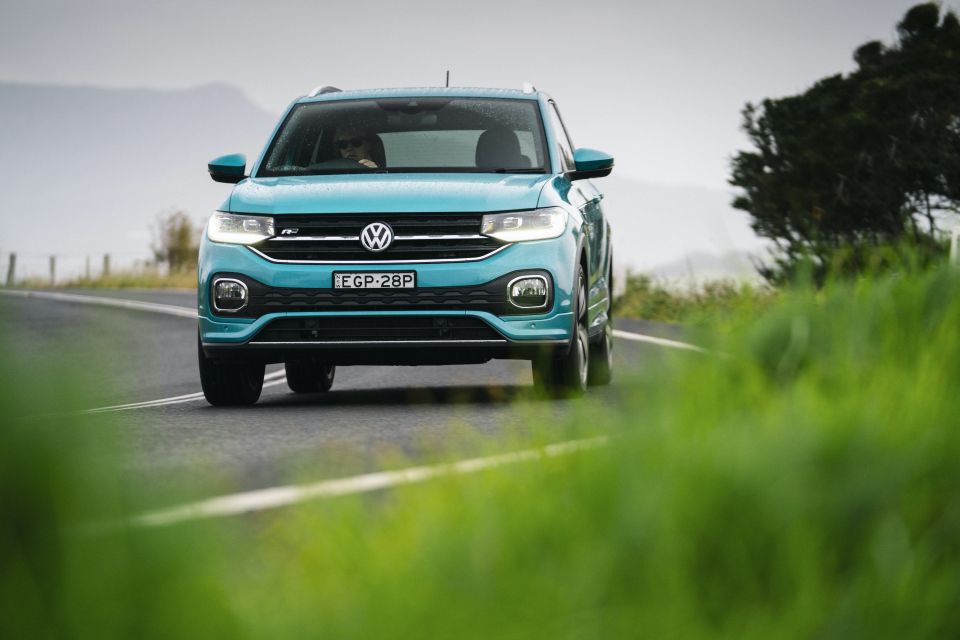
Metallic and Pearl Effect paint (Energetic Orange, Limestone Grey, Reflex Silver, Reef Blue and Deep Black) costs $600, and the hero Makena Turquoise Metallic $800.
There are also two interior options packages: Sound and Vision (10.25-inch digitised instrument cluster with maps, 300W Beats sound system, satellite-navigation) for $1900 on either grade, and R-Line (18-inch wheels, R badging and dark body accents, aluminium pedal caps and scuff plates, a leather steering wheel, ‘carbon flag’ upholstery) for $2500, and only on the Style.
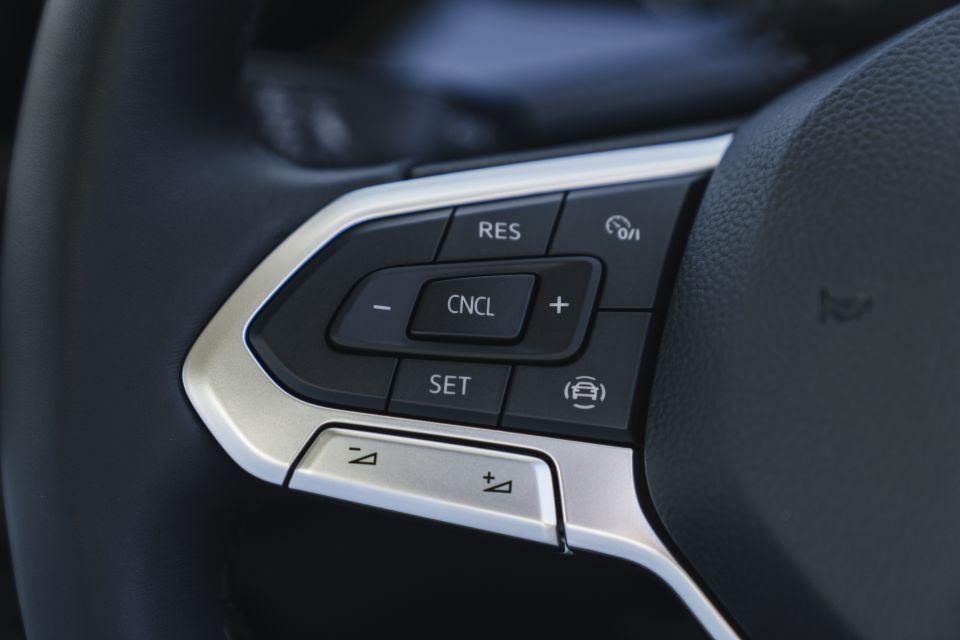
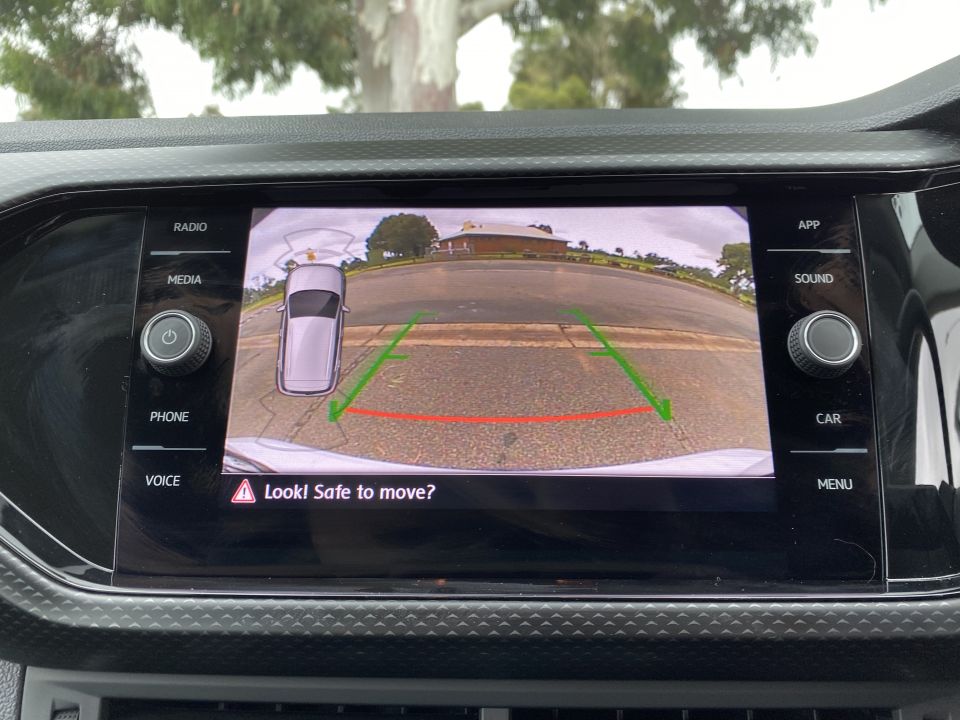
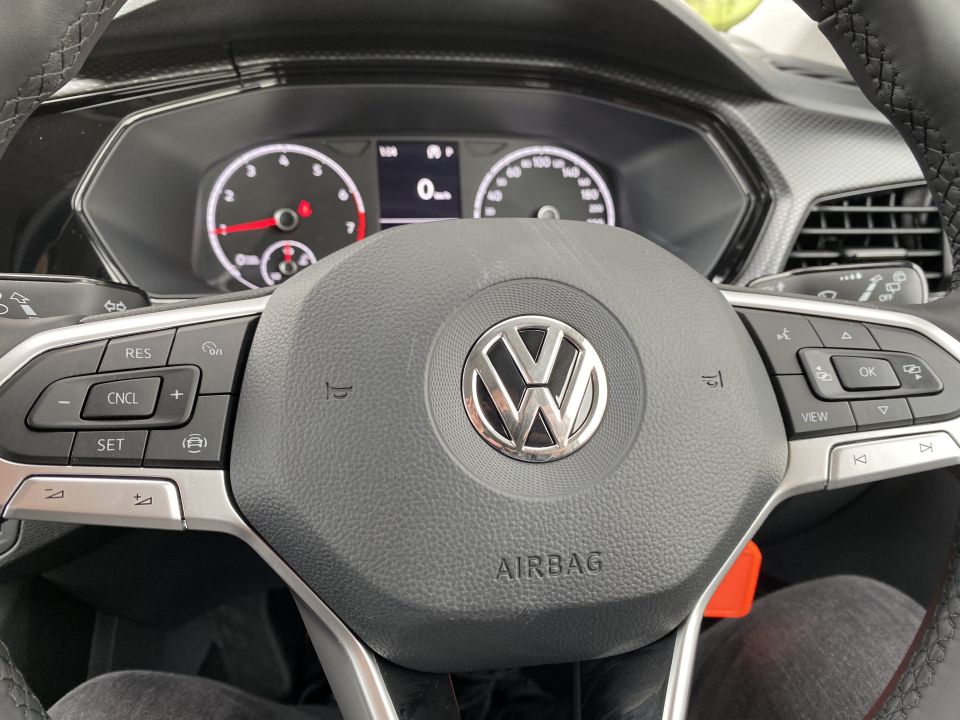
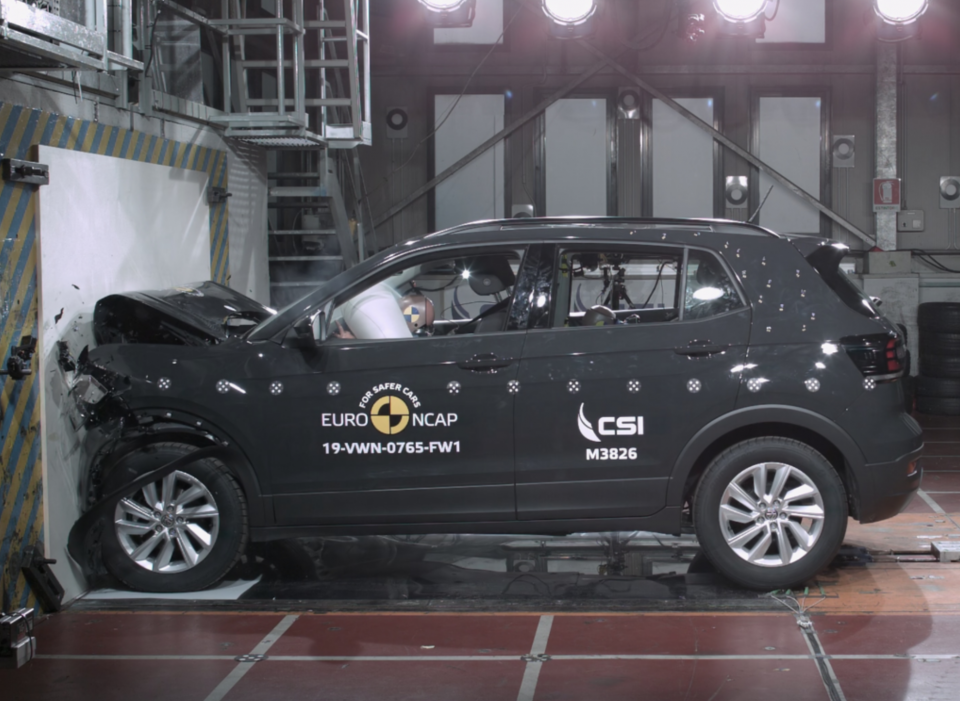
Absolutely. ANCAP awarded the range a five-star score against 2019 criteria, including a near-perfect 97 per cent for adult occupant protection. It also scored 85 per cent for child occupant protection, 81 per cent for vulnerable road user protection, and 80 per cent for safety assist.
Both grades get six airbags, a multi-collision brake system that stops the car from being shunted forward by secondary impacts, rear ISOFIX and top-tether child-seat points, lane-departure alert, driver fatigue detection system, and autonomous emergency braking that is designed to detect pedestrians and bikes below 80km/h in daytime or night.
The Style grade adds blind-spot monitoring with rear cross-traffic alert, and Proactive Occupant Protection. With this latter system, the driver’s and front passenger’s seat belts are tightened automatically when a collision is anticipated and, in an “extremely critical unstable driving situation such as severe oversteer or understeer with ESC intervention”, the side windows are 90 per cent closed.
You can purchase a Driver Assistance package (adaptive cruise control, blind-spot monitoring, Park Assist, power-folding door mirrors, Proactive Occupant Protection) for $1200 on the Life grade.
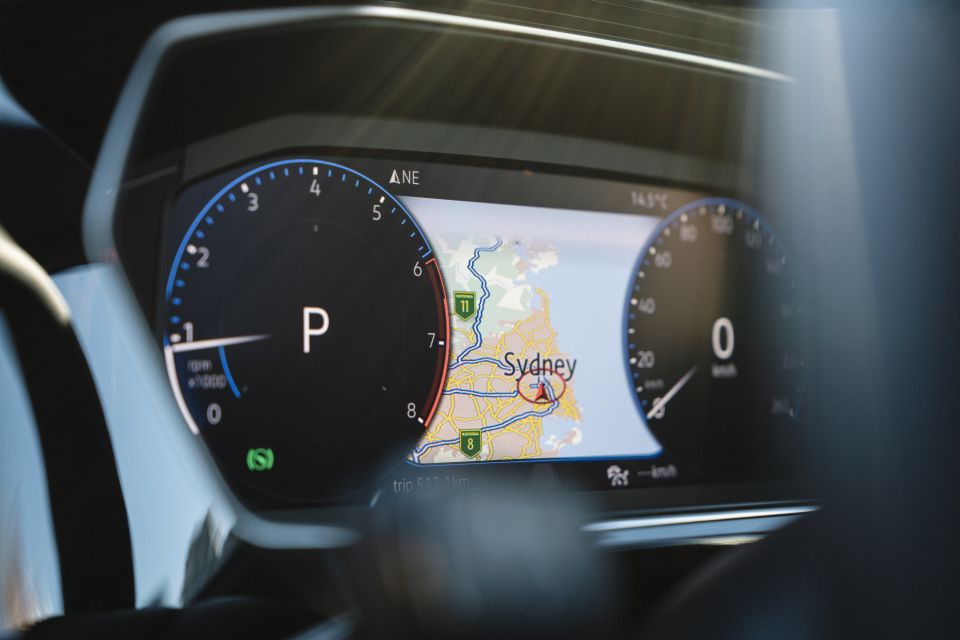
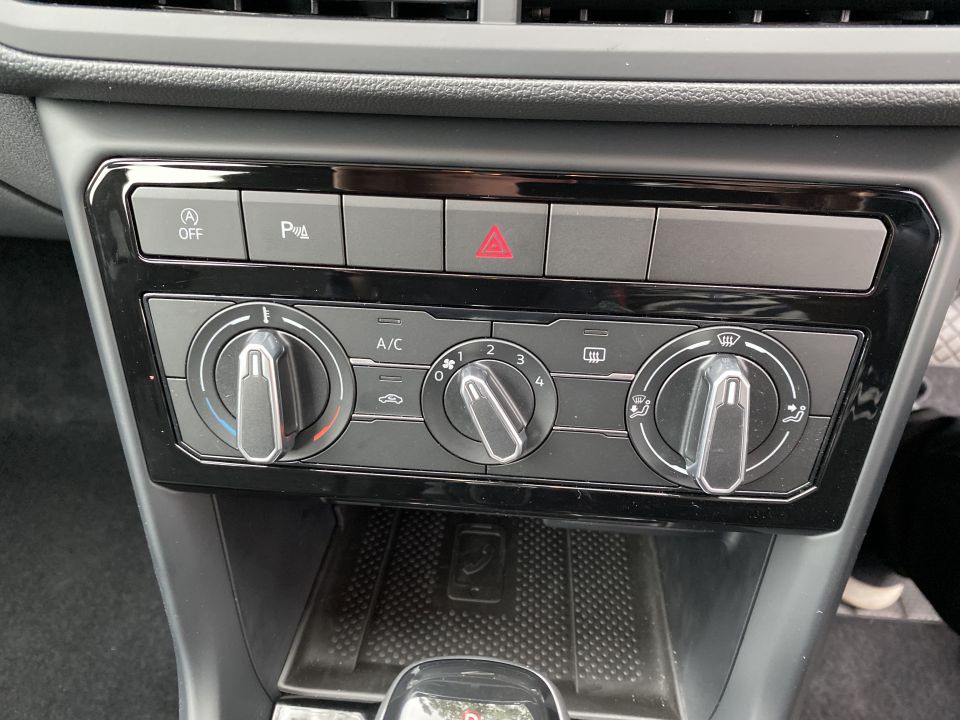
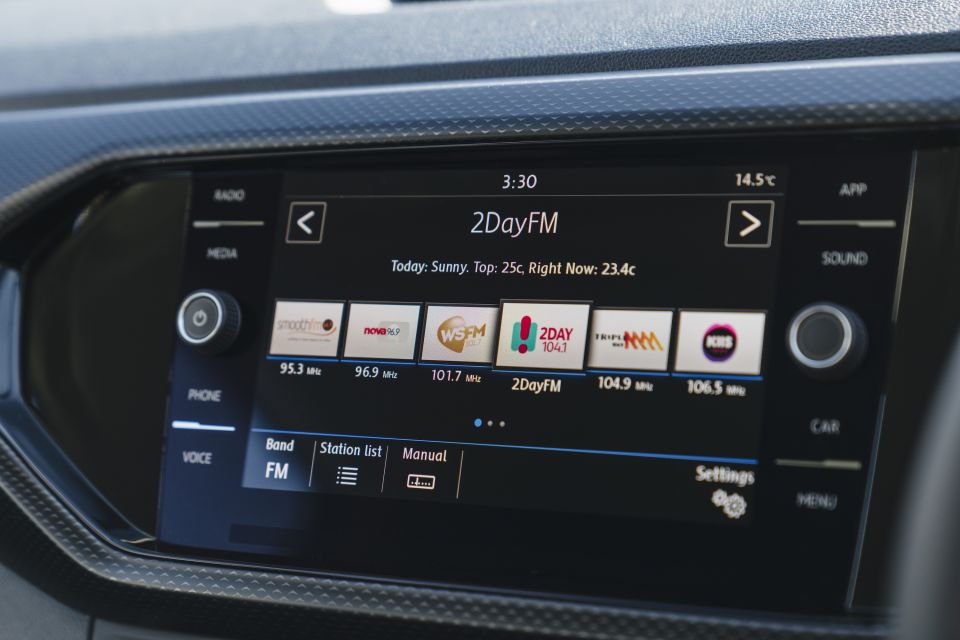
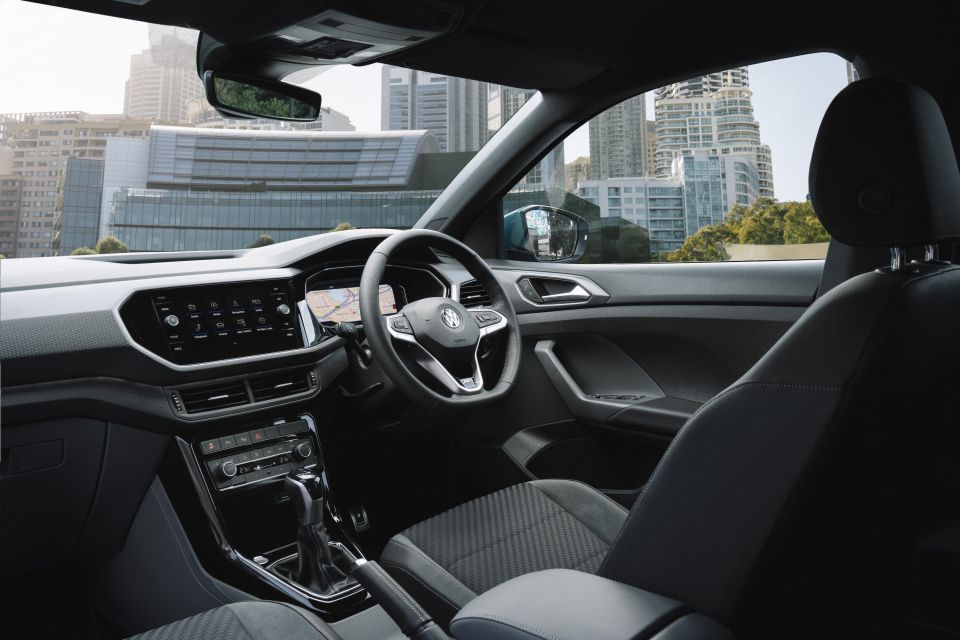
The interior has good ergonomics with a high, commanding driving position and plenty of seat and wheel adjustment. The steering wheel design is of a new sort with plush buttons nicely damped. It actually looks and feels better than a Touareg’s wheel at a third the price.
Patterned plastic on the dash breaks up the grey monotony, and the uses of scratch-prone glossy black surfaces are thankfully kept to a minimum. But there are some signs of cost-cutting, with lots of hard trims on the dash top and transmission tunnel, and no fabric lining in the door bins as found on a Golf.
That being said, it’s all well screwed together.
Storage comprises a small centre console with a padded lid, an open section atop the dash, a quite capacious glovebox, centre cup holders, an open fascia ahead of the gear shifter with a Qi wireless phone charger integrated, and door bins capable of swallowing a 1.5 litre bottle with room to spare.
The standard touchscreen has a high resolution and the infotainment is intuitively controlled by touch buttons on each side. The need for satellite navigation is removed by the presence of phone mirroring, since Google Maps are more informative and up to date anyway. The reversing camera is also crisp.
While the large digital instruments with maps look very slick indeed, the basic analogue dials bookending a smaller digital display with speed is absolutely fine if you can’t justify the stretch.
It’s a small thing, but all four electric windows are one-touch up and down.
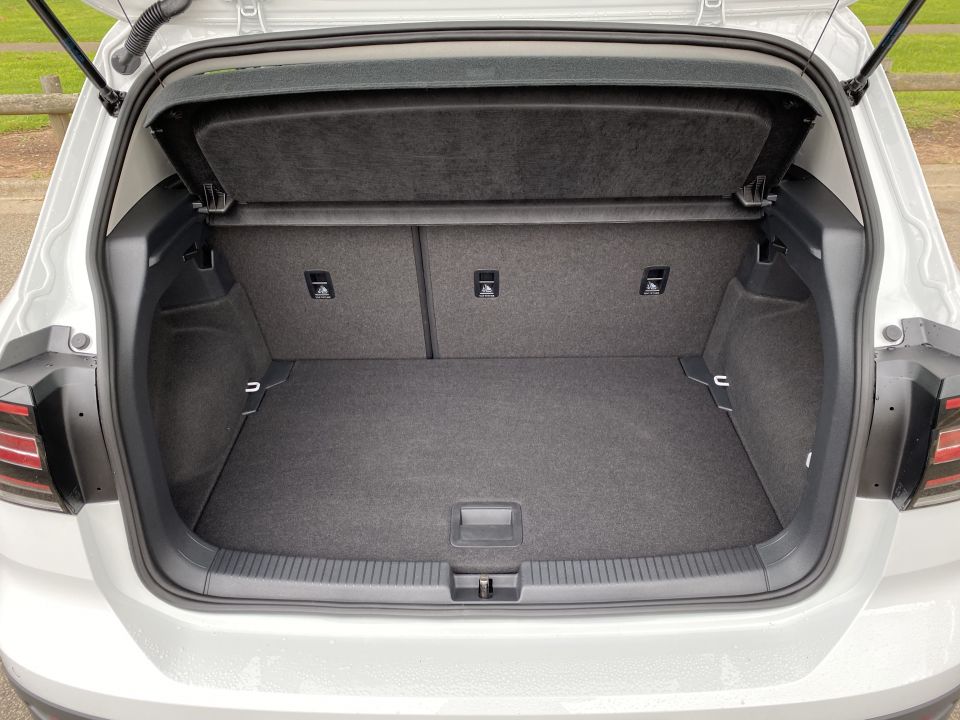
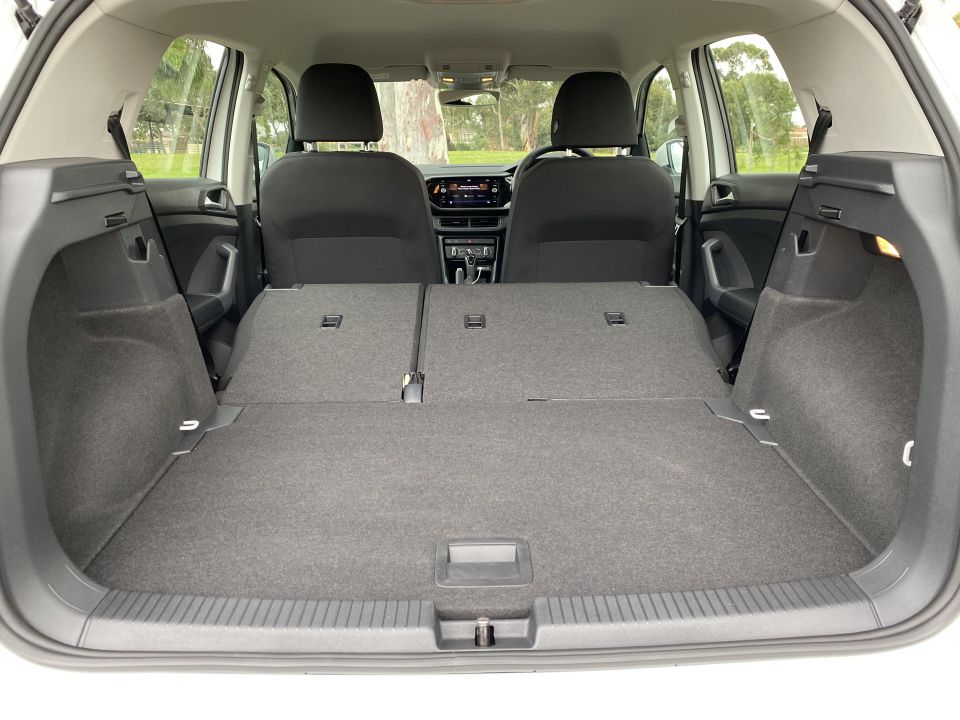
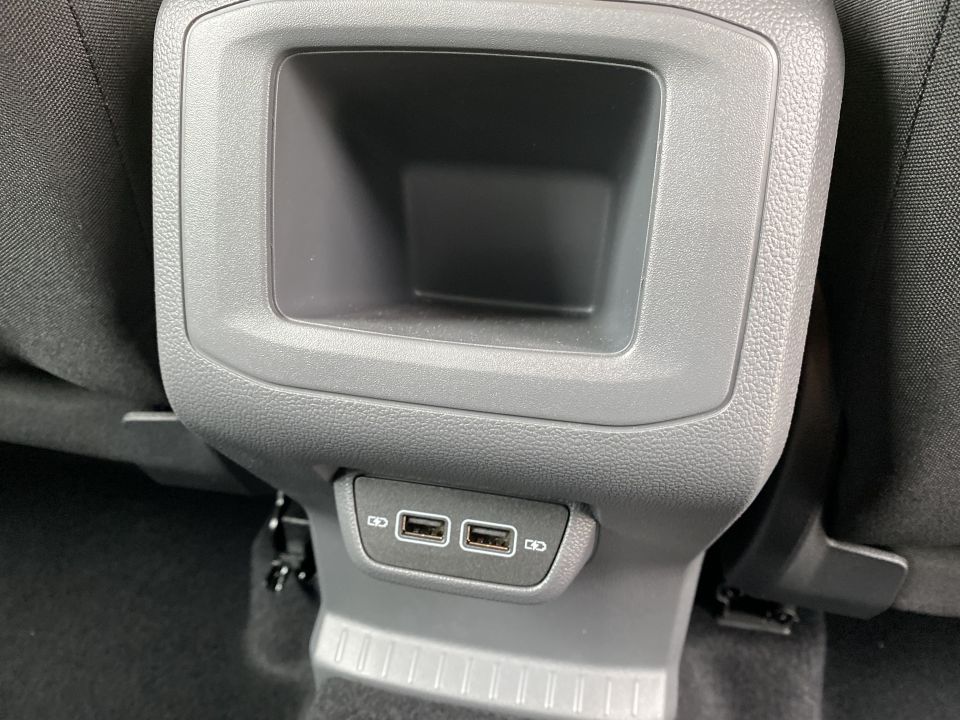
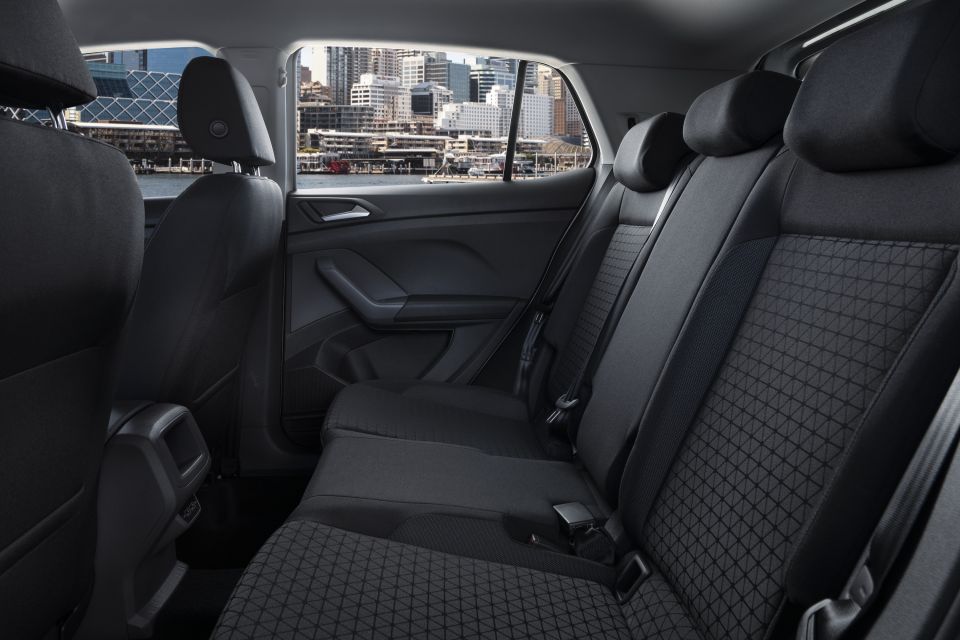
The back seats bely the T-Cross’s small footprint. I’m 194cm and had sufficient legroom behind my own preferred seating position, and the high roof allows plenty of headroom. The large side windows make it light and bright.
Features in the rear include two USB points, coat hooks, door bins and two reading lights. But the trims are again hard and cheap-feeling, notably the elbow rest that could use some padding. I’d also welcome a folding armrest, cup holders, and rear vents for the Aussie summer.
Surprisingly, the rear bench slides forward on rails as a single piece, which enables you to increase the size of the boot. The seat-backs also fold fairly flat to accommodate bulkier items.
The boot floor can be lowered, and with five seats in use it is spacious indeed, at 385 litres (455L with the back seat base slid forward). That latter figure makes its claimed storage capacity greater than the much larger Kia Seltos and Honda HR-V, while in less spacious settings it still claims an edge over the Vitara, Venue, C-HR and Mazda CX-30. A Mazda CX-3 offers just 264L.
There’s a temporary space-saver spare wheel under the cargo floor, which is fine for a city car and much better than the increasingly common repair kit.
For those after a classy, high-tech and practical car with a tiny footprint, there are few cars that fulfil the brief better. It’s not quite as Tardis-like as a Honda Jazz or HR-V, but it certainly dwells in the upper echelon.
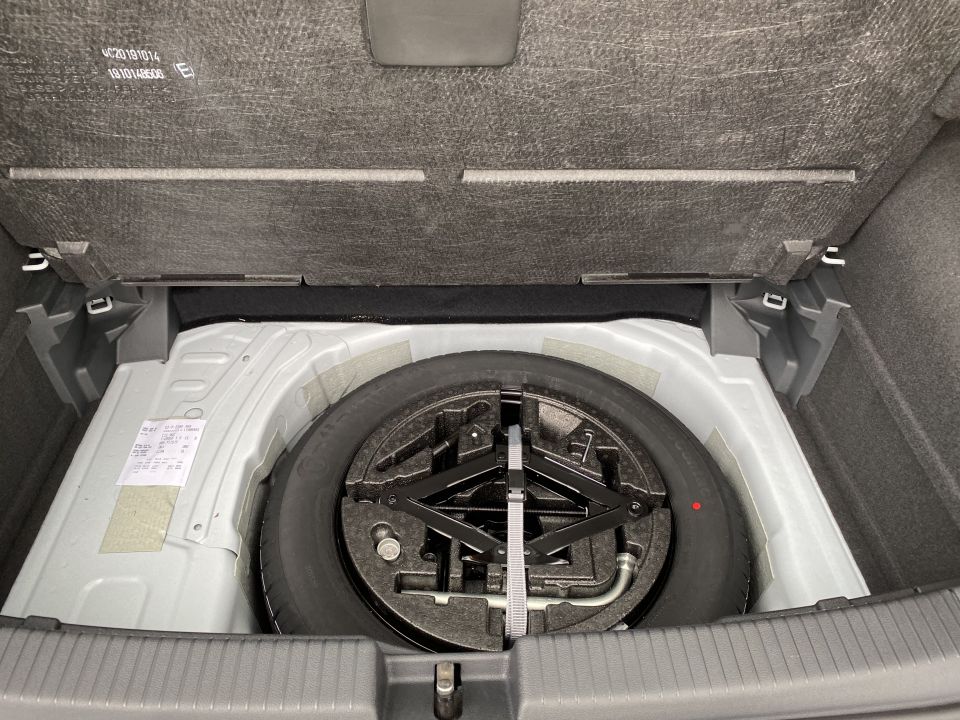
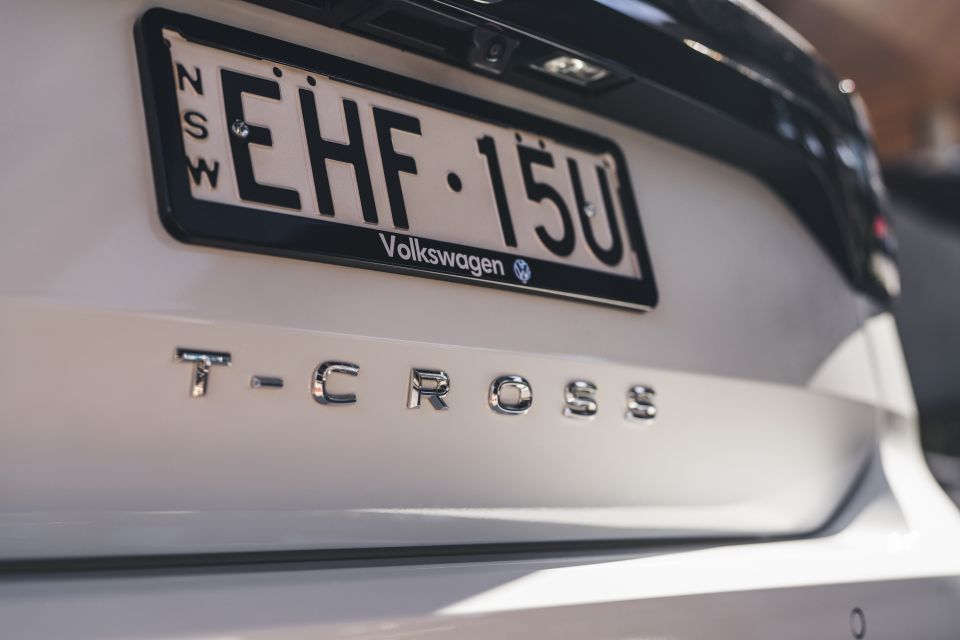

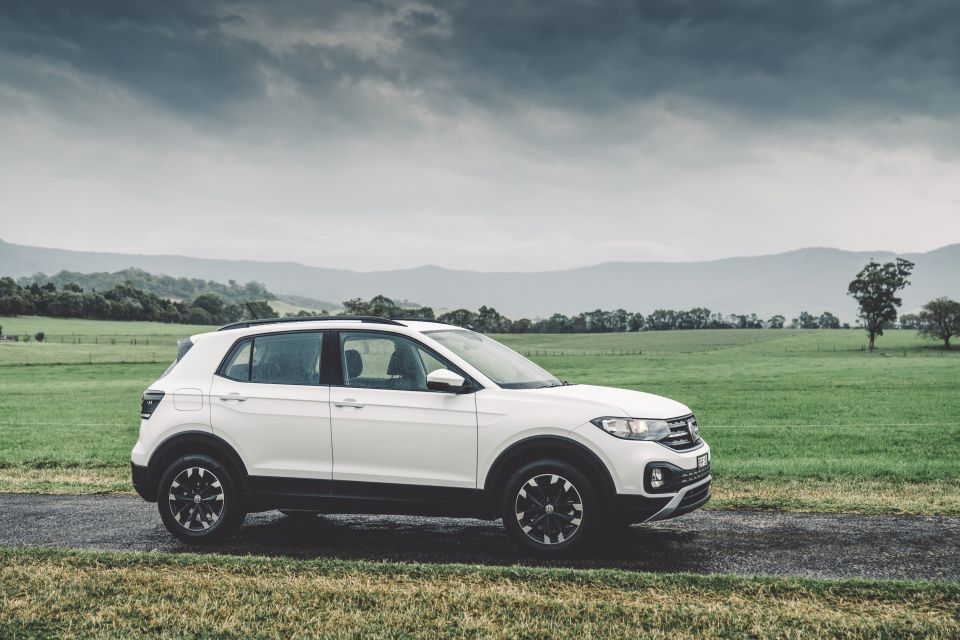
Both grades feature the same 85TSI engine as the Polo. It’s a 1.0-litre three-cylinder petrol with a turbocharger, outputting 85kW of power at 5000rpm and a fairly strong 200Nm of torque between 2000 and 3500rpm.
Drive is exclusively sent to the front wheels, meaning kerb-hopping is about the most off-roading you’ll be doing. The only transmission is a seven-speed DSG automatic. Volkswagen decided against a manual price-leader because, frankly, nobody buys them anymore.
Volkswagen claims a zero to 100km/h sprint time of 10.2 seconds, but I couldn’t do better than 11 seconds.
Meanwhile the claimed fuel economy on the combined cycle is a frugal 5.4 litres every 100km, and CO2 emissions are 123 grams per kilometre. Like all petrol Volkswagens it requires at least 95 RON premium petrol. The tank is 40L.
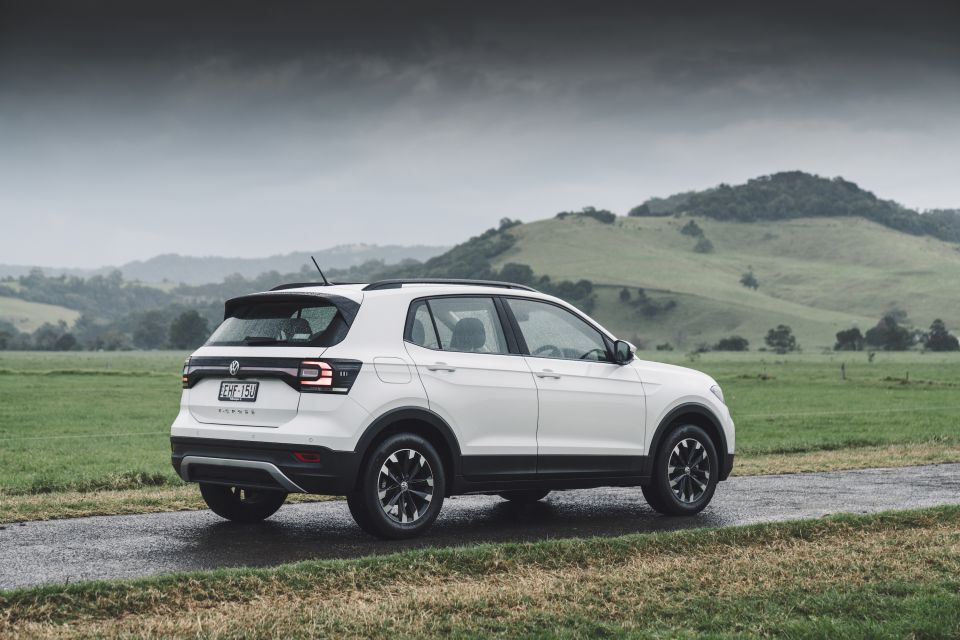
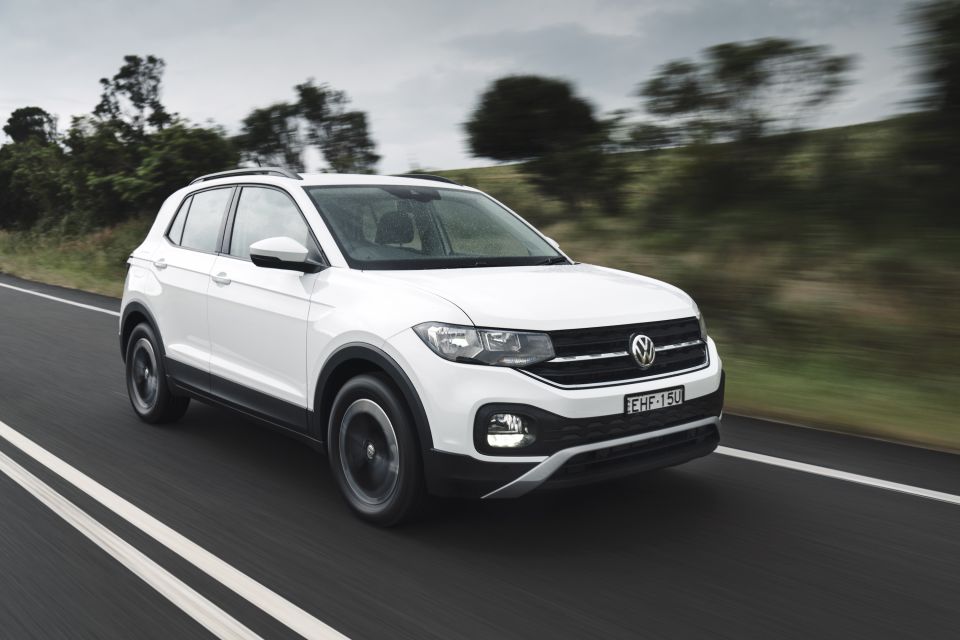
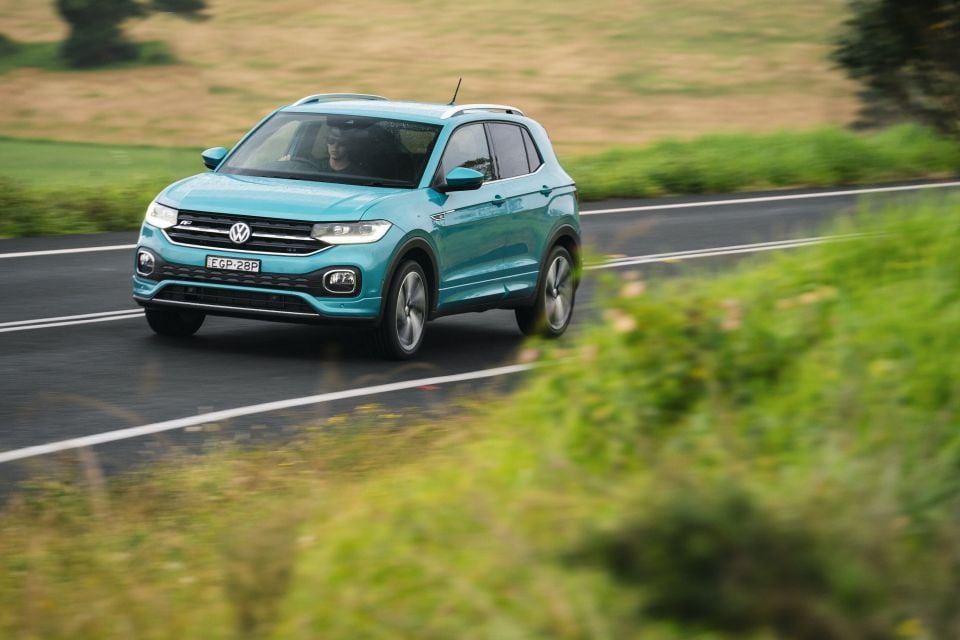
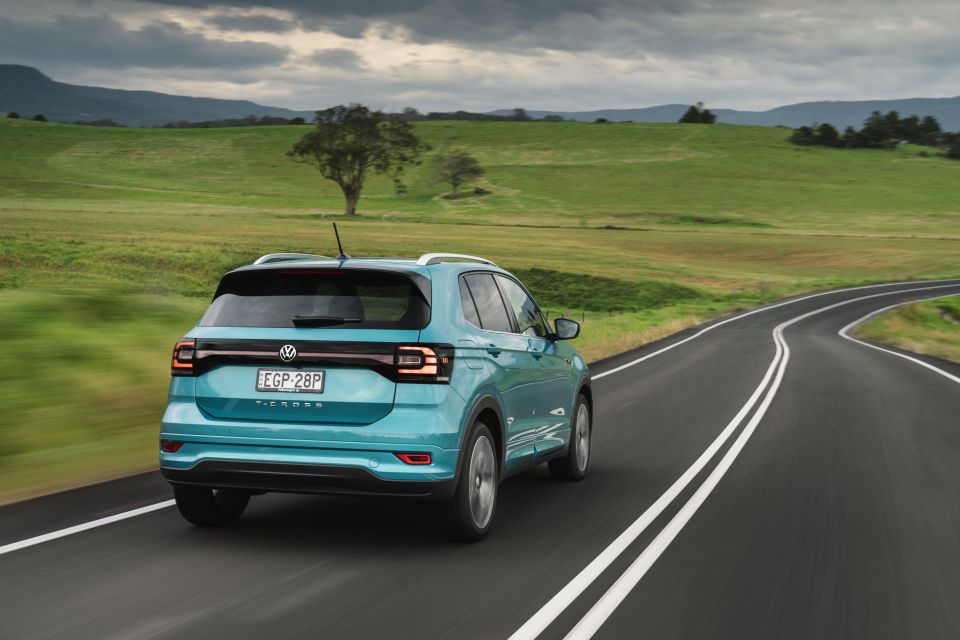
The three-cylinder engine displays the thrumming sound and slight vibrations at idle typical of its type, but it doesn’t lack punch at all. Indeed it’s strong mid-range torque delivery makes rolling response perfectly adequate for a vehicle of this type.
I averaged fuel economy of 6.7L/100km on my mixed driving loop. The idle-stop system is quite unobtrusive as far as such systems go, but can be switched off if you prefer.
At 110km/h the tacho reads 2500rpm since the dual-clutch transmission has a tall seventh gear for highway cruising. If you shift the stick across from D for Drive to S for Sport it holds lower gear ratios longer, and there’s even a manual mode.
Anyone who has driven a DSG will know that it does require an adjustment in driving style. If you simply mash the accelerator at idle, it can take half a second to really engage and get the car moving. Steady throttle pressing is what’s needed to override any jerkiness from take-off.
I don’t mind the driveline, though to some tastes a conventional torque-converter automatic transmission gives a more instant response. The upside of the DSG are its syrupy and rapid shifts when you’re on the move.
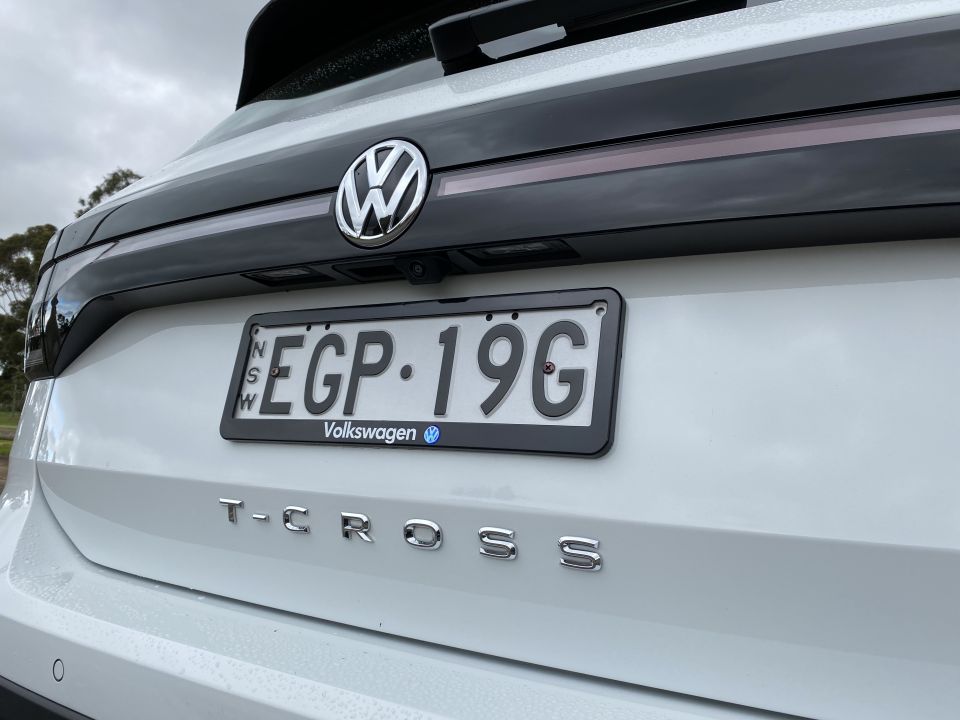
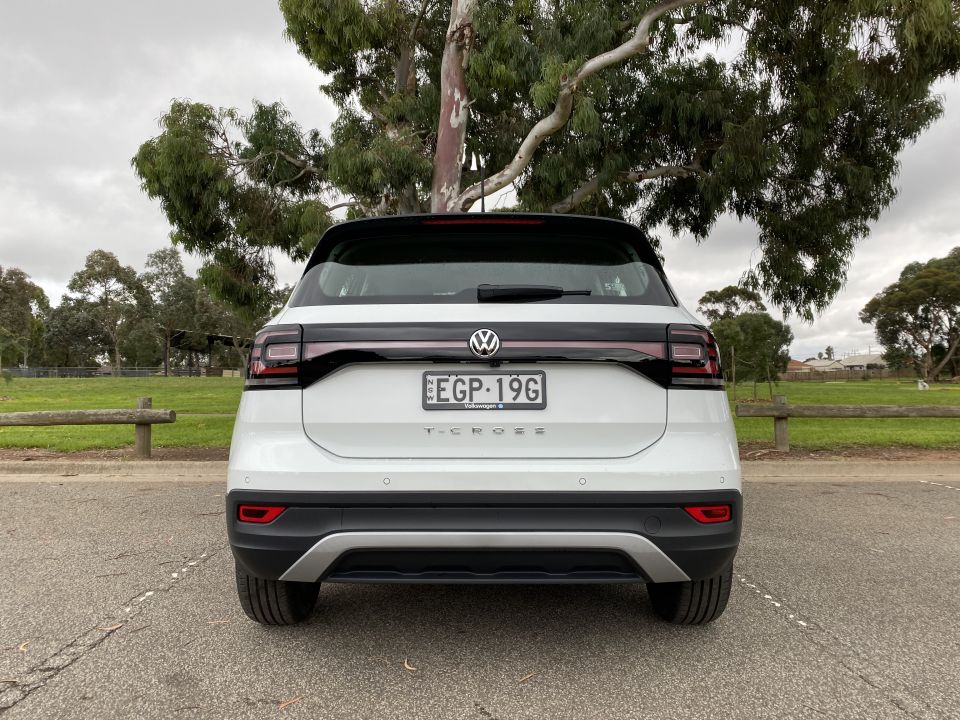

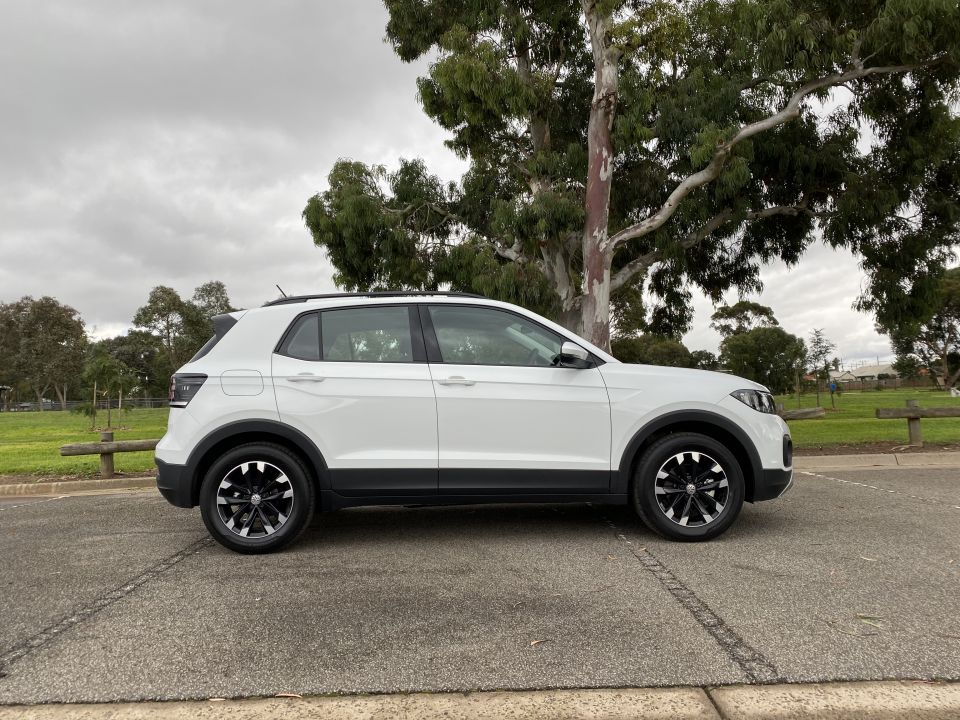
The T-Roc’s greatest attribute is its generous 185mm of ground clearance, enhanced by a shortish front overhang and tall seating position. These enable one to easily park, and punt down steep driveways without needing to slow down for fear of scraping the front bumper lip.
The steering is very light and lacks feedback, but for a city car its ease-of-twirling suits. In typical Volkswagen style is rides very nicely, smooth and supple over sharp hits, yet the tall body doesn’t needlessly lean or roll through corners either, and torsion-beam rear suspension rarely loses road grip if you drive sensibly.
One trade off to optioning the sexy 18-inch wheels is a slight reduction in ride comfort, but it’s never offensive. It’s also quiet even at highway speeds, with VW having done a good job of isolating the cabin from tyre roar over all but very coarse chip roads, and wind noise too.
The safety systems all seemed to work as intended, with the lane assist function able to steer the car away from a road line before prompting you to take over. However, the active cruise control doesn’t allow you to undertake unless you tap the throttle.
Given how bad Australian lane discipline is compared to the Autobahn (where undertaking is a capital offence), sometimes you really have no choice but to pass on the left.
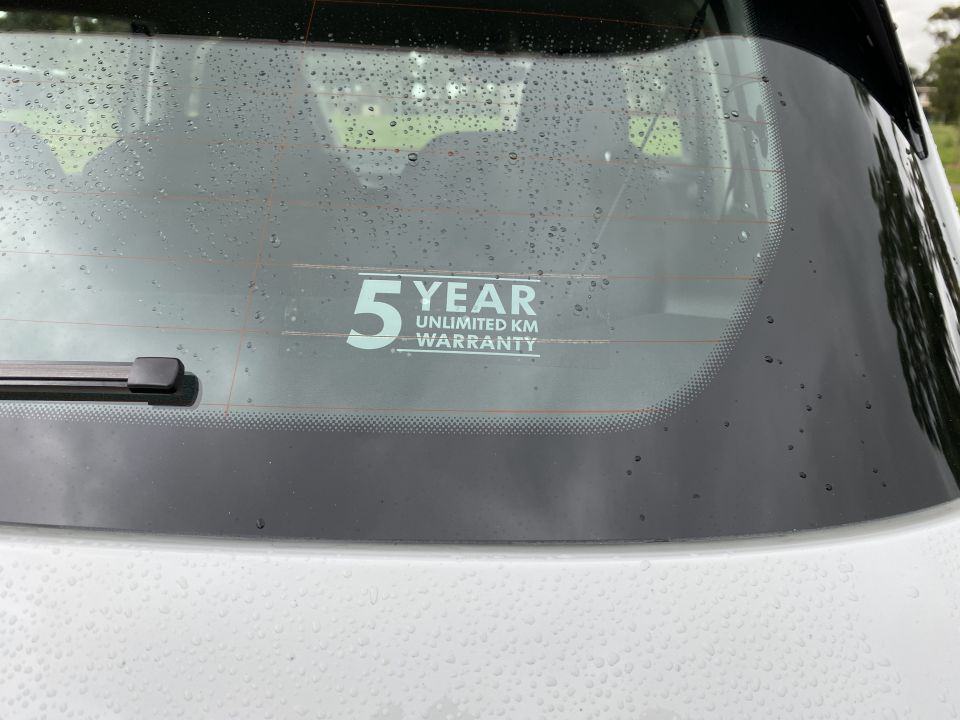
Volkswagen offers a five-year warranty with no distance cap as standard, and roadside assist.
Servicing intervals are every 12 months or 15,000km and it has reduced the price of each visit. Traditionally Volkswagens were too expensive to maintain, but the T-Cross comes with a servicing package that costs $1800 for five years/75,000 km.
That’s not too bad, and stacks up well against Mazda if not Toyota. If you don’t purchase this pack and instead opt to pay at each service instead, it’s 26 per cent pricier. A no-brainer.
Volkswagen has made this service package a sweeter deal because it wants you to return to an official dealer for each maintenance visit, rather than going to an independent repairer.
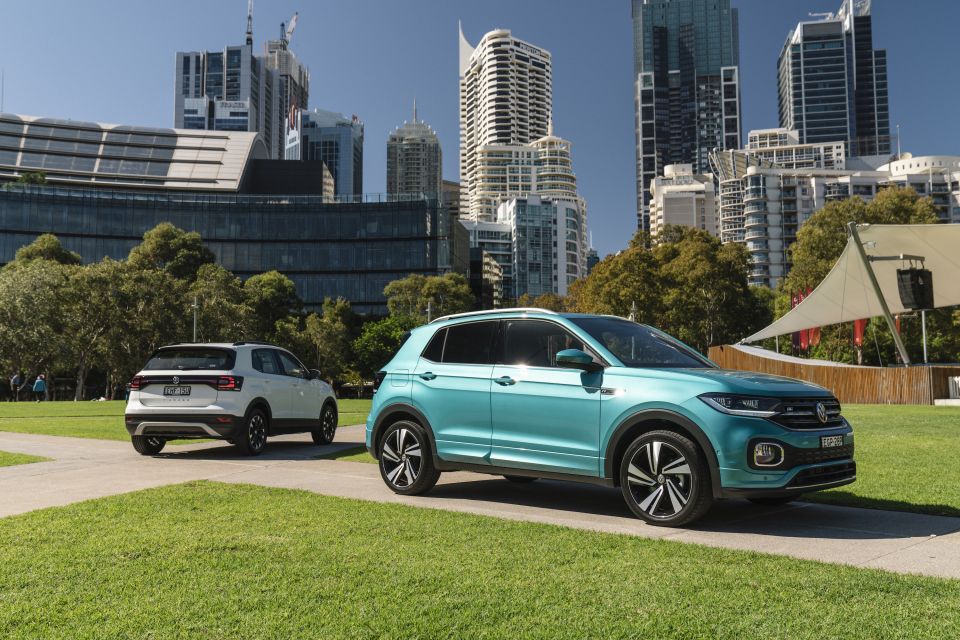
So what do we think of the Volkswagen T-Cross?
Cynicism dictates that it’s an expensive Polo, with a spacious and ergonomic cabin that nevertheless shows evidence of cost cutting, and demands you buy a few options packs to make it as ‘premium for the people’ as the VW tagline claims.
But in the urban jungle, its extra height and clearance, and capacious boot and back seats for something so short make sense, and it will find many a buyer because of this.
The fact it looks typically handsome but adds a few adventurous hints like the lovely rear light cluster and black strip, rides and handles with typical VW nous (though it lacks zest), and isn’t especially expensive to service, makes it a strong bet.
The fact is, most light and small SUVs are heart-over-head purchases. It just so happens that Volkswagen’s first attempt is one of the better ones out there. If you’re shopping at this end of the market, then it’s clearly a top contender. Gee it gets boring, praising new Volkswagens. But the truth doesn’t care.
Take advantage of Australia's BIGGEST new car website to find a great deal on a Volkswagen T-Cross.
Discover and compare similar models


William Stopford
4 Days Ago


James Wong
3 Days Ago
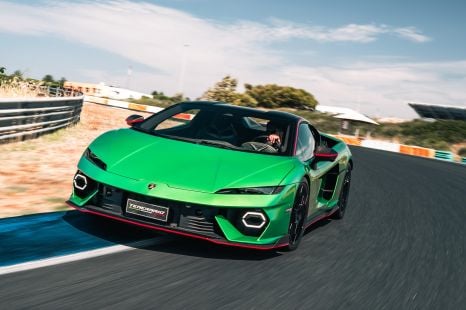

Alborz Fallah
2 Days Ago


Andrew Maclean
2 Days Ago
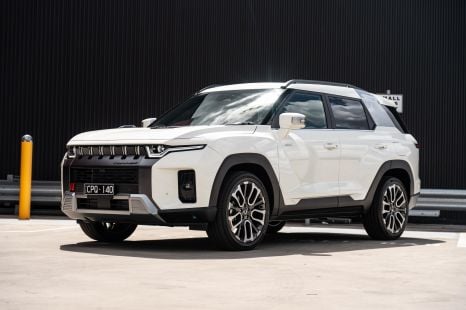

Max Davies
2 Days Ago
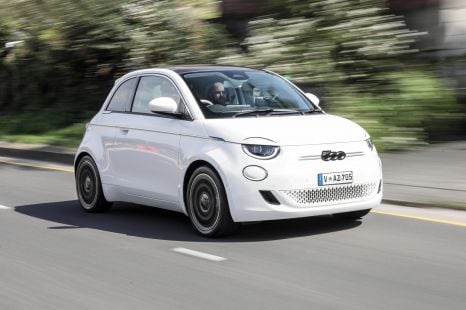

Damion Smy
1 Day Ago